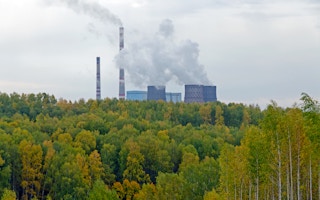If you plan to be around in mid-century you may find yourself living in interesting times. We could have solved climate change – or it could have spiralled beyond hope of repair.
Here’s the good news. Scientists say it is technically and economically feasible to phase out net greenhouse gas (GHG) emissions almost entirely by 2050.
A report published by the energy consultancy Ecofys and the Global Call for Climate Action, a campaigning NGO, says technological options available today and in the near future could reduce emissions to zero for roughly 90% of current sources of GHG emissions. The remaining emissions could be offset by carbon sinks.
The report concludes that a net GHG phase-out by 2050 would mean there was a very high likelihood of meeting the internationally agreed goal of preventing global average temperatures rising more than 2°C above their pre-industrial level, and a 50% chance of staying below 1.5°C by the end of the century.
But there’s some less good news as well. A decade before that, in just 27 years from now, researchers believe that, based on present emissions trends, there is a strong chance the world will have emitted the last tonne of carbon dioxide (CO2) it can afford to produce if it is to stay below that 2°C limit.
27 years and counting
Last month’s Fifth Assessment Report (AR5) from the Intergovernmental Panel on Climate Changeconcluded that the world’s “climate budget” – the amount of CO2 it can afford to emit if it is to stay below 2°C – is a trillion tonnes.
Researchers at the University of Oxford, UK, say global emissions already amount to 574 billion tonnes – and show every sign of increasing. Based on emission trends over the past 20 years, they expect at the moment that the trillionth tonne will be emitted some time during November 2040 (the exact date is moving slowly closer).
To prevent the world emitting the trillionth tonne, the Oxford team says, CO2 emissions will have to be cut by 2.47% a year, and to keep falling at that rate until they reach zero.
The Oxford research may make sober reading, but it could be worse. It does not take into account emissions of greenhouse gases apart from CO2, and it does not allow for “feedbacks” – the possibility that global warming could itself trigger damaging consequences, for example the release from the Arctic permafrost of methane, a potent GHG.
Who cuts first – and deepest?
Reporting the Oxford research on Yale Environment 360, an online magazine, the British science journalist Fred Pearce writes: “We have options, but the stakes are high. And the worst thing may be that there is no guarantee that keeping below the trillion-ton target will be enough.”
Problems he identifies include practical ways to reduce emissions far and fast enough. Possibilities he mentions – all of them controversial – include nuclear power, carbon capture and storage (CCS), and geo-engineering.
Renewable technologies may close the gap, if they can produce enough energy soon enough. Some of the scenarios examined in the Ecofys report find that 100% renewable energy by 2050 is possible. Others assume a smaller contribution from renewables, but more from CCS, energy efficiency, and possibly also nuclear power.
Whatever technology the world chooses, there will still be the thorny question of who should make the biggest cuts. As the Ecofys report says, “Whether a phase-out is politically feasible will be determined in the coming years.”
In November the UN’s Climate Change Convention will hold its main annual negotiating session, this year meeting in the Polish capital, Warsaw. It is trying to work out an agreement on emissions cuts which can be agreed in Paris in 2015 and come into effect in 2020. Watch out for the talks on the carbon budget.










